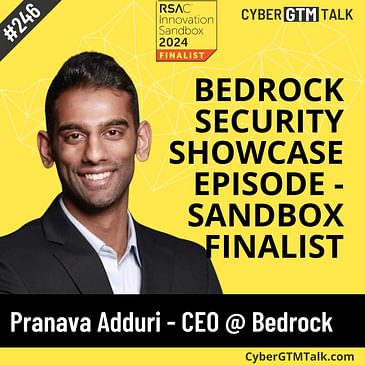In this conversation, we discuss:
- 👉 The challenges of scaling enterprise data security effectively.
- 👉 Bedrock Security's innovative AI-driven solutions for cybersecurity.
- 👉 Bedrock's plans for a successful go-to-market year in 2024.
About our guest:
Pranava Adduri is the CEO and Co-Founder of Bedrock Security. With a dynamic background in data protection and storage systems, Pranava brings an innovative edge to tackling today's cybersecurity challenges.
Connect with Pranava and explore Bedrock Security further:
- Pranava's LinkedIn
- Bedrock Security's Website
Follow me on LinkedIn for regular posts about growing your cybersecurity startup
Want to grow your revenue faster? Check out my consulting and training
Need ideas about how to grow your pipeline? Sign up for my newsletter.




